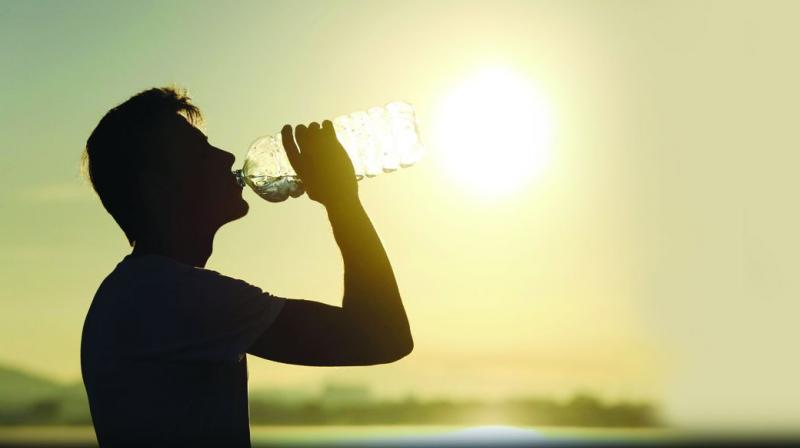Stay healthy, stay cool!

Global warming is not just another topic at environment seminars. We are experiencing the climatic changes that are heating up the planet and summers getting longer and hotter. Dr K. Hari Prasad, M.D., President, Hospital Division, Apollo Hospitals, tells us about combating heat, knowing what a heat stroke is and maintaining a healthy and cool lifestyle this summer.
Our Body: A Natural Thermostat
An internal mechanism in the human body acts as a thermostat, with the ability to adapt to increases or decreases in environmental temperatures. Only when the temperatures outside go up significantly does this mechanism fail and thus the harmful effects of high temperatures start manifesting. As the body temperature increases, the inbuilt thermostatic mechanisms in the body get overwhelmed and the circulatory system and central nervous system are the most commonly affected systems in the body. It is not just the temperature, but the heat accompanied by humidity that makes it dangerous.
The body compensates for raised temperatures by increasing the circulation of blood to the blood vessels closer to the skin, and these blood vessels dilate to accommodate the additional blood that is being pumped into them. When this happens, excess heat is drained off into the cooler environment and in addition there is sweating.
Sweating: Does it help cool the body down?
Sweating by itself, does not reduce body temperature. The water on the skin surface (sweat) needs to be removed by evaporation and only then can the body cool down. It is therefore important not to wipe off the sweat, but allow it to evaporate. In humid conditions, sweat does not get evaporated from the skin surface and this adds to the dangerous effects of high temperatures.
Stay cool
Avoiding continuous exposure to high temperatures and staying hydrated are critical to avoiding the dangerous effects of heat. Avoid sugary drinks, caffeine-containing drinks and alcohol as they are counterproductive. Individuals who work out regularly are less prone to sun stroke and exhaustion.
Working out induces a lot of the characteristics of high environmental temperatures. Elderly, obese individuals and those on certain medications like Beta blockers are prone to the dangerous effects of high environmental temperatures.
Stay alert
It is important to understand the early symptoms of heat exhaustion and take immediate precautionary measures. Heat rash and cramps are the earliest signs and if neglected, can lead to serious and sometimes fatal complications. Muscular cramps are extremely painful and usually involve the abdominal and leg muscles. When these occur it is important to stop physical activity and rest in a cool place. Drinking water or any liquid with electrolytes at the rate of one cup every 15 minutes is a must. In most instances, the initial symptoms subside with resting in a cool environment, hydration and staying away from physical activities.
Heat exhaustion also occurs when an individual sweats profusely for a prolonged time. Here, there is a significant loss of salt and water from the body and unless corrected, it impacts the functioning of the heart, brain and lungs. An individual with heat exhaustion has cold, moist and pale skin, headache, nausea, vomiting and dizziness with severe exhaustion. Such individuals must rest in a cool place, remove clothing and apply wet cloth over the body and take a cup of water or fluid with electrolytes every 15 minutes. They must also seek medical help, as they are at a high risk of progressing to heat stroke which is dangerous and sometimes fatal.
It can become a medical emergency
Prolonged exposure to high temperatures and dehydration (loss of body fluids and salt) result in heat stroke. An individual is diagnosed with heat stroke when the body temperature is higher than 104 degrees Fahrenheit with complications of the central nervous system. The usual symptoms apart from high body temperature include nausea, vomiting, convulsions (fits), confusion, disorientation and sometimes loss of consciousness or coma. This is a medical emergency and needs immediate hospitalisation. Delay in initiating treatment for heat stroke can lead to a variety of serious complications including liver failure, kidney failure, lung injury, coma and heart dysfunction. This is potentially a fatal condition if not treated aggressively and appropriately, but the good news is that it is a preventable condition.
— As told to Usha Munshi

